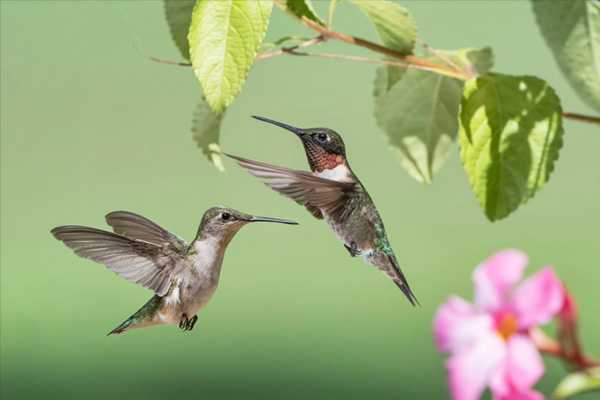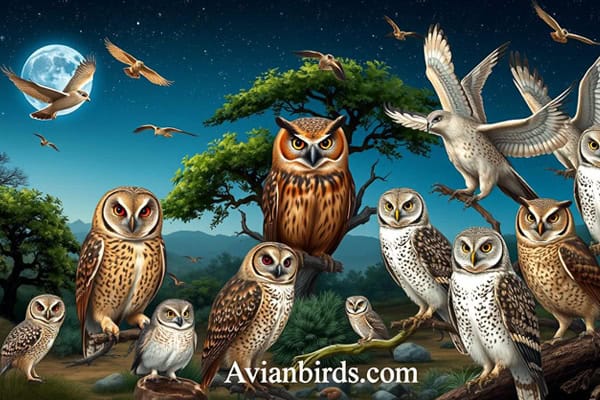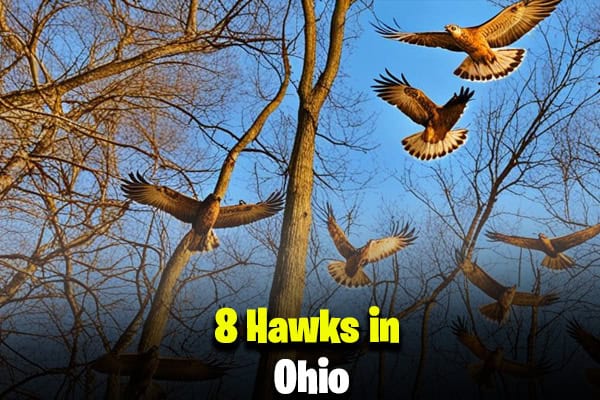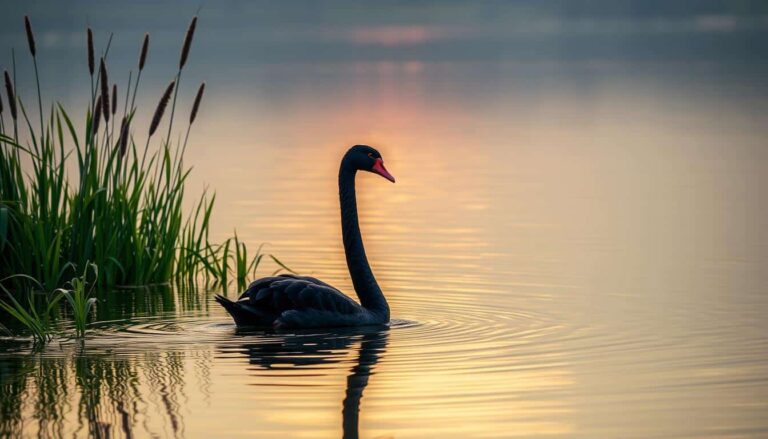6 Types of Hummingbirds in Wisconsin (With Pictures)
We’re going on an exciting journey to explore hummingbirds in Wisconsin. Imagine a warm summer day in Wisconsin, the air filled with the gentle buzzing of insects and the melodious songs of various birds. Suddenly, a flash of iridescent green zips past your eyes, hovering for a moment at a nearby flower before darting away in the blink of an eye. You’ve just witnessed one of nature’s most fascinating creatures – a hummingbird. These tiny, energetic birds may seem out of place in the northern state of Wisconsin, but they are indeed regular visitors and even residents in some cases. Join us as we explore the world of hummingbirds in Wisconsin, uncovering the species that grace the state with their presence and the best places to spot these winged wonders.
1. Ruby-throated hummingbird
- Scientific name: Archilochus colubris
- Size: 3-3.5 inches long
- Weight: 2-6 grams
- Lifespan: 3-5 years in the wild
- Diet: Nectar from flowers, small insects, and tree sap
The Ruby-throated Hummingbird is the most common hummingbird species in Wisconsin and the only one breeds in the state. These tiny birds are a marvel of nature, with their ability to hover, fly backward, and even upside down.
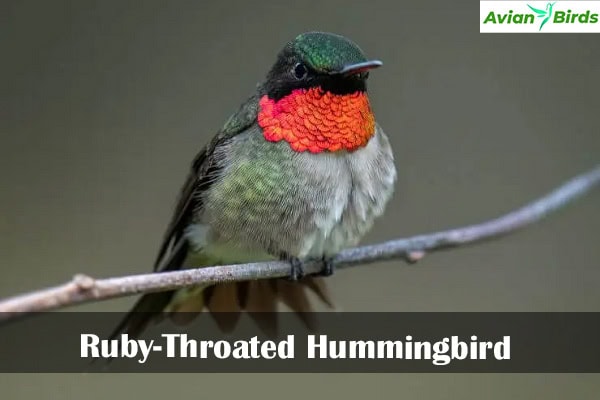
Males are easily identified by their bright red throat patch, which gives the species its name. Females lack this distinctive feature but share the same emerald green back and white underparts. Every spring, Ruby-throated Hummingbirds make an incredible journey from Central America to Wisconsin, crossing the Gulf of Mexico in a single, non-stop flight that can last up to 20 hours.
Hummingbirds in other Regions:
- Hummingbirds Found in Oklahoma
- Hummingbirds in Missouri
- Hummingbirds in Florida
- Hummingbirds in Maryland
- Hummingbirds in Michigan
2. Rufous Hummingbird
- Scientific name: Selasphorus rufus
- Size: 2.8-3.5 inches long
- Weight: 2-5 grams
- Lifespan: Up to 8 years in the wild
- Diet: Nectar, small insects, and spiders
The Rufous Hummingbird is a rare but exciting visitor to Wisconsin. Known for their feisty personalities and striking orange-red plumage, these little birds are a treat for any birdwatcher lucky enough to spot one. Despite their small size, Rufous Hummingbirds are incredibly tough and adaptable.
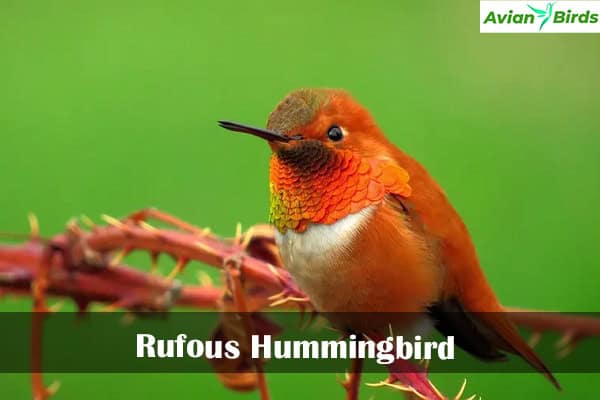
They undertake one of the longest migratory journeys relative to the body size of any bird, traveling up to 4,000 miles from their breeding grounds in Alaska and western Canada to their wintering areas in Mexico. While they’re not regular breeders in Wisconsin, they sometimes appear during their fall migration, usually between August and October.
3. Anna’s Hummingbird
- Scientific name: Calypte anna
- Size: 3.9-4.3 inches long
- Weight: 3-6 grams
- Lifespan: Up to 8 years in the wild
- Diet: Nectar, small insects, and tree sap
Anna’s Hummingbird is a rare vagrant in Wisconsin, occasionally spotted by lucky birders. These hummingbirds are larger than the Ruby-throated Hummingbirds and are known for their striking iridescent green and rose-pink coloration. The males have a brilliant rose-red crown and gorget (throat patch) that can appear dark in poor lighting but burst into vibrant color when hit by sunlight.

Anna’s Hummingbirds are unique among North American hummingbirds in that the males have a song, a series of scratchy chirps and buzzes, which they use to defend territory and attract mates. While these birds are primarily found along the Pacific Coast, climate change and the increasing popularity of backyard feeders have led to occasional sightings in more eastern states like Wisconsin.
4. Allen’s Hummingbird
- Scientific name: Selasphorus sasin
- Size: 3-3.5 inches long
- Weight: 2-4 grams
- Lifespan: Up to 5 years in the wild
- Diet: Nectar, small insects, and spiders
Allen’s Hummingbird is another rare visitor to Wisconsin, typically found along the Pacific Coast. These small hummingbirds are very similar in appearance to the Rufous Hummingbird, with the males sporting a bright orange-red throat and a greenback. Females and immature birds have green backs with rusty-colored flanks and tail feathers.
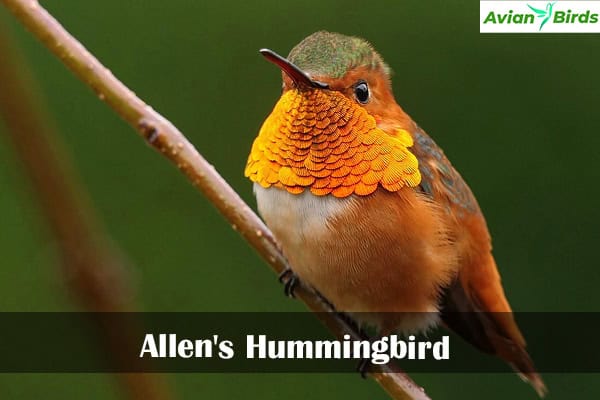
What sets Allen’s Hummingbirds apart is their unique courtship display. Males perform a spectacular dive display, climbing up to 100 feet into the air before plummeting towards the ground, pulling up at the last second with a loud burst of sound produced by their tail feathers. While it’s uncommon to see this display in Wisconsin, the occasional Allen’s Hummingbird that strays into the state during migration might treat observers to this impressive feat.
5. Broad-billed Hummingbird
- Scientific name: Cynanthus latirostris
- Size: 3.25-4 inches long
- Weight: 3-4 grams
- Lifespan: Up to 7 years in the wild
- Diet: Nectar and small insects
The Broad-billed Hummingbird is a true rarity in Wisconsin, with only a handful of confirmed sightings over the years. These beautiful birds are typically found in Mexico and the southwestern United States, making any appearance in Wisconsin a cause for excitement among birders. Male Broad-billed Hummingbirds are easily identified by their striking blue-green body and distinctive red bill with a black tip.
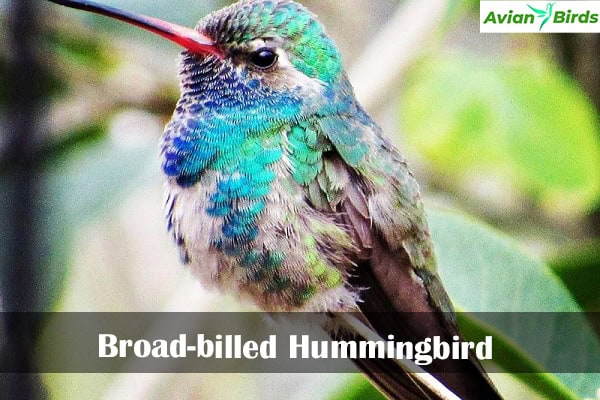
Females are less colorful but still possess the characteristic broad, red bill. These hummingbirds are known for their aggressive behavior, often chasing away other hummingbirds and even larger birds from their preferred feeding areas. While the chances of seeing a Broad-billed Hummingbird in Wisconsin are slim, their occasional appearances remind us of the unpredictable nature of bird migration and distribution.
6. Mexican Violetear
- Scientific name: Colibri thalassinus
- Size: 3.8-4.7 inches long
- Weight: 5-6 grams
- Lifespan: Up to 12 years in the wild
- Diet: Nectar, small insects, and spiders
The Mexican Violetear, formerly known as the Green Violetear, is an extremely rare vagrant in Wisconsin. These medium-sized hummingbirds are native to Mexico and Central America but occasionally wander far north of their usual range. Mexican Violetears are known for their striking appearance, with a primarily emerald green body and distinctive violet ear patches that give them their name.
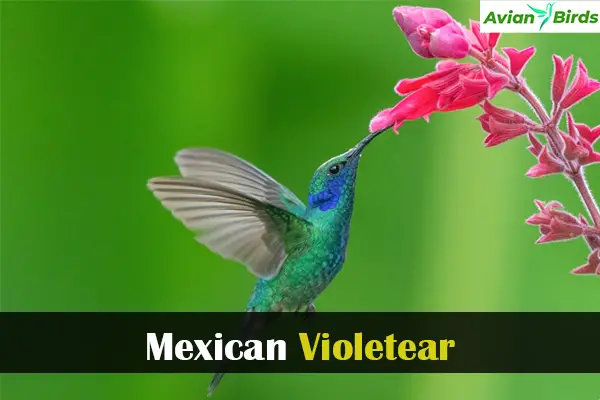
They also have a black stripe running through their eyes, adding to their exotic look. These hummingbirds are larger and more robust than the species typically found in Wisconsin, making them stand out when they do appear. While sightings in the state are few and far between, the presence of a Mexican Violetear always causes a stir in the birding community, drawing observers from far and wide to catch a glimpse of this tropical visitor.
Where to Look for Hummingbirds in Wisconsin
Now that we’ve explored the various hummingbird species that can be found in Wisconsin, let’s discuss where you’re most likely to spot these tiny marvels. While Ruby-throated Hummingbirds are relatively common throughout the state during the summer months, the other species mentioned are rare visitors and may require some luck and patience to observe.
- Gardens and Parks
- Forest Edges and Clearings
- Backyard Feeders
- Wetland Areas
- Urban and Suburban Areas
- Migratory Hotspots
Tips for Successful Hummingbird Watching
- Timing is Key: Hummingbirds are most active during the early morning and late afternoon hours. Plan your observations during these times for the best chances of seeing them.
- Be Patient and Still: Hummingbirds can be easily startled. Find a comfortable spot and remain as still as possible. You’ll be surprised how close they might come if you’re patient.
- Listen Carefully: Hummingbirds make a distinctive buzzing sound when they fly. Often, you’ll hear a hummingbird before you see it.
- Use Binoculars: While hummingbirds can often be observed with the naked eye, a good pair of binoculars will allow you to see details like the iridescent throat patches of male hummingbirds.
- Plant Hummingbird-Friendly Flowers: If you have a garden, consider planting flowers that attract hummingbirds. Native species are best, as they provide the most nutritious nectar.
- Keep Your Eyes Peeled for Rare Species: While Ruby-throated Hummingbirds are by far the most common in Wisconsin, always be on the lookout for rare visitors. You never know when a Rufous or Allen’s Hummingbird might appear!
- Join Local Birding Groups: Local Audubon chapters and birding clubs often organize hummingbird-watching trips and can alert you to rare sightings in your area.
Read More🐦Related Articles:
- Vultures in Georgia
- falcons in Arizona
- Hawks in Hawaii
- Hummingbirds Found in Oklahoma
- What Does Three Little Birds Mean?
Conclusion
Hummingbirds, with their tiny size and incredible flying abilities, never fail to captivate those lucky enough to observe them. While Wisconsin may not have the hummingbird diversity of more southern states, it offers unique opportunities to witness these remarkable birds at the northern edge of their range. From the common Ruby-throated Hummingbird to the rare vagrant species that occasionally grace the state with their presence, each hummingbird sighting in Wisconsin is a special event.

